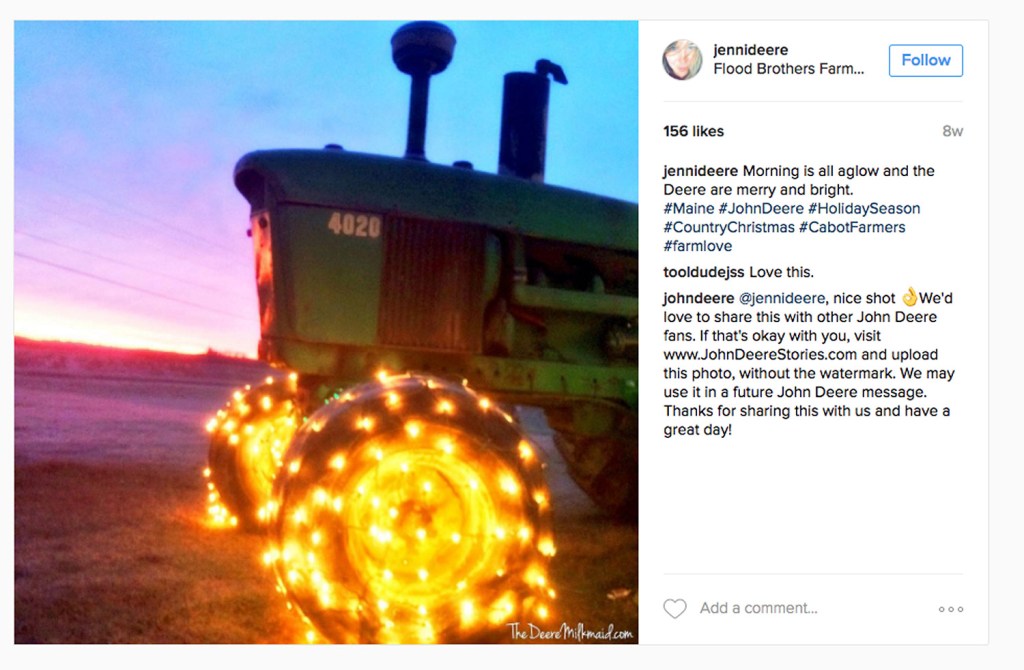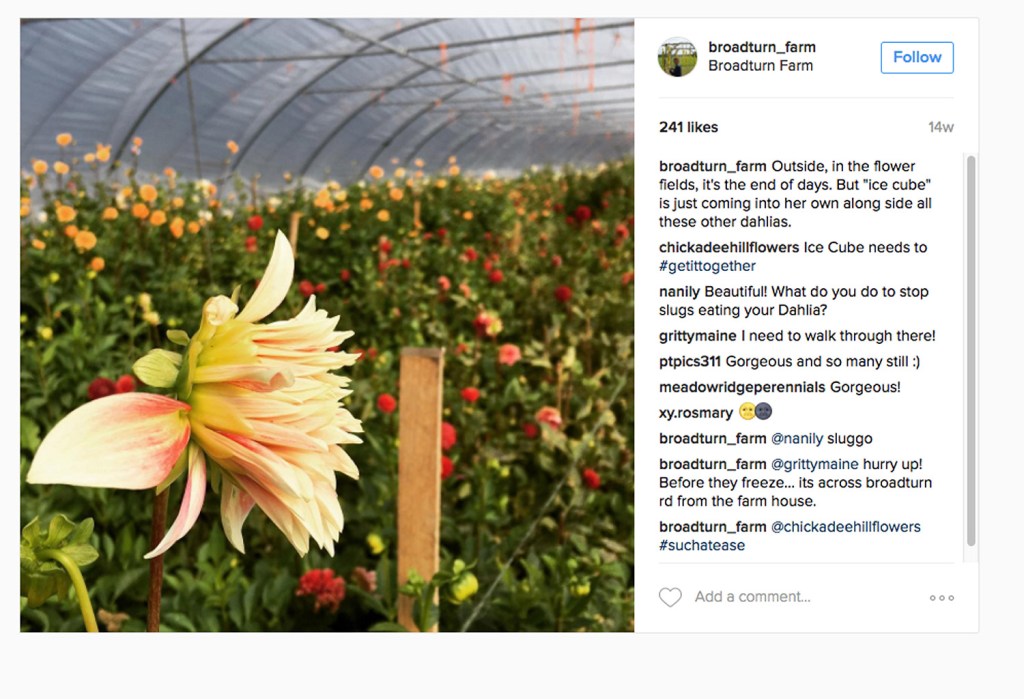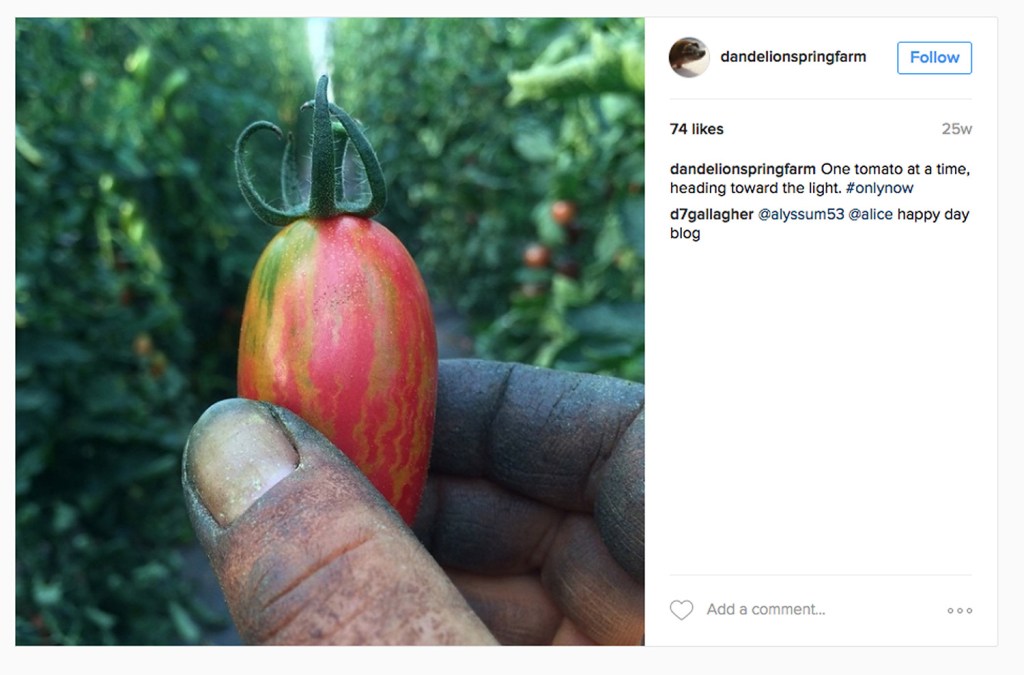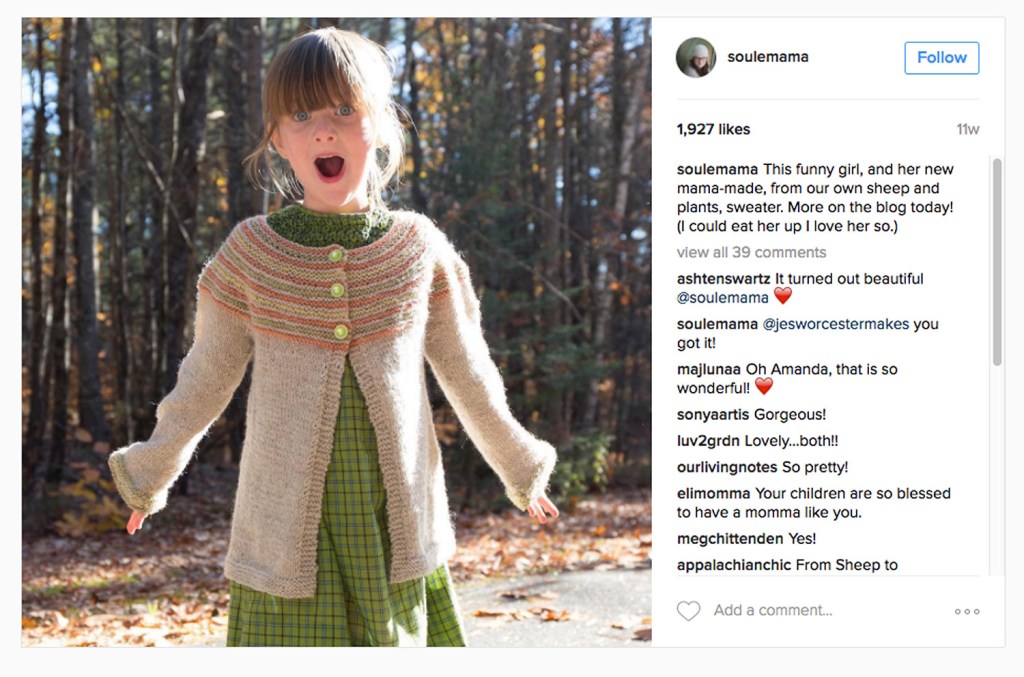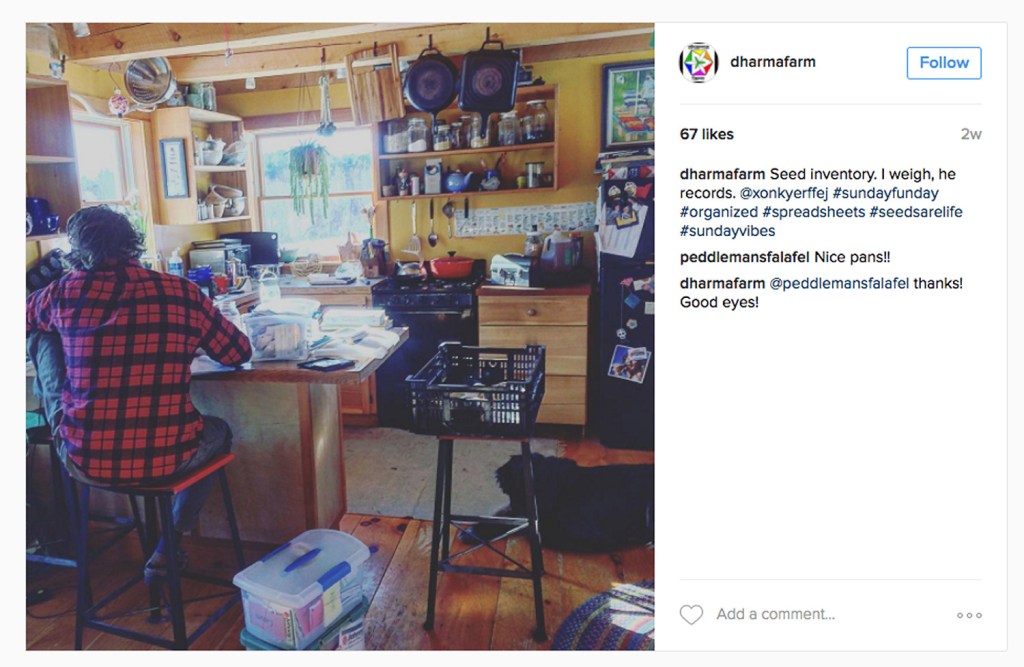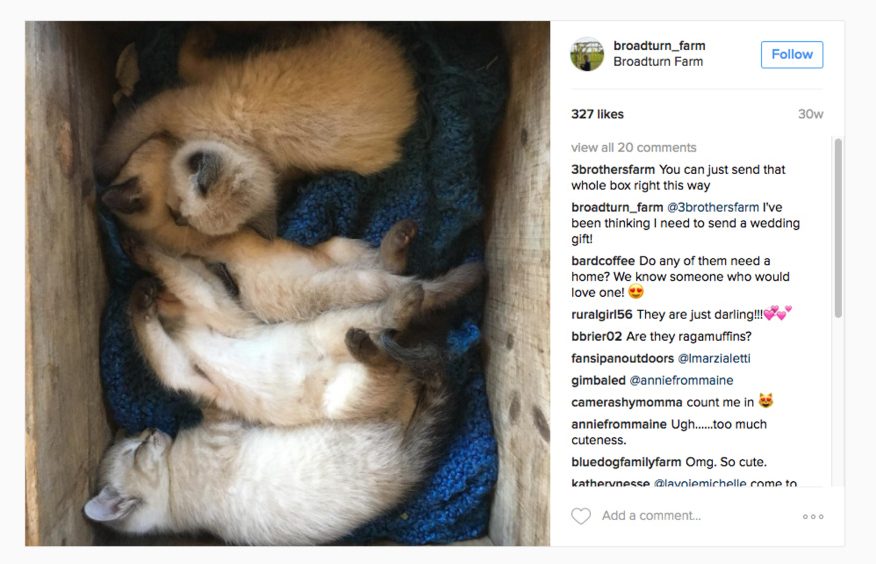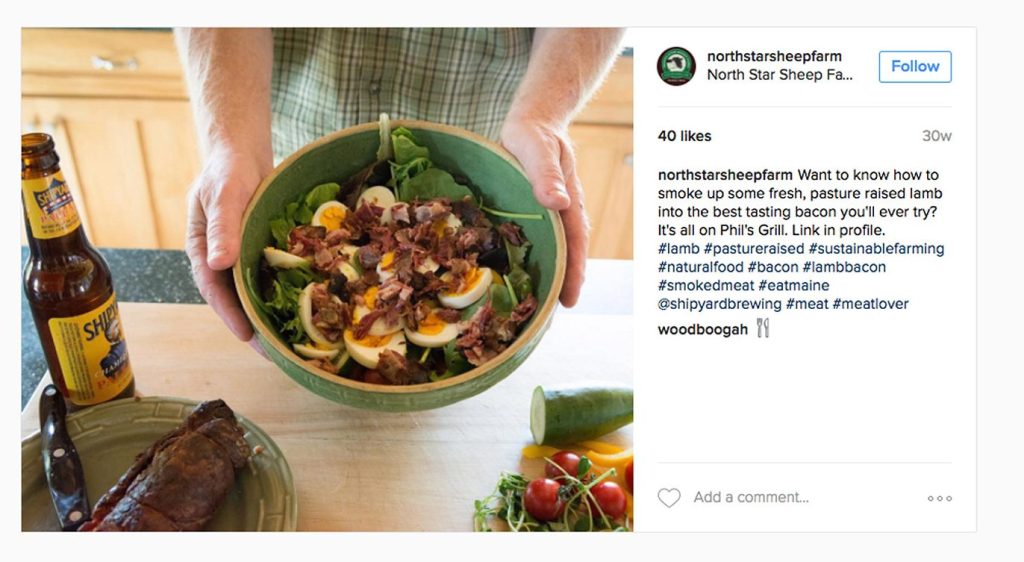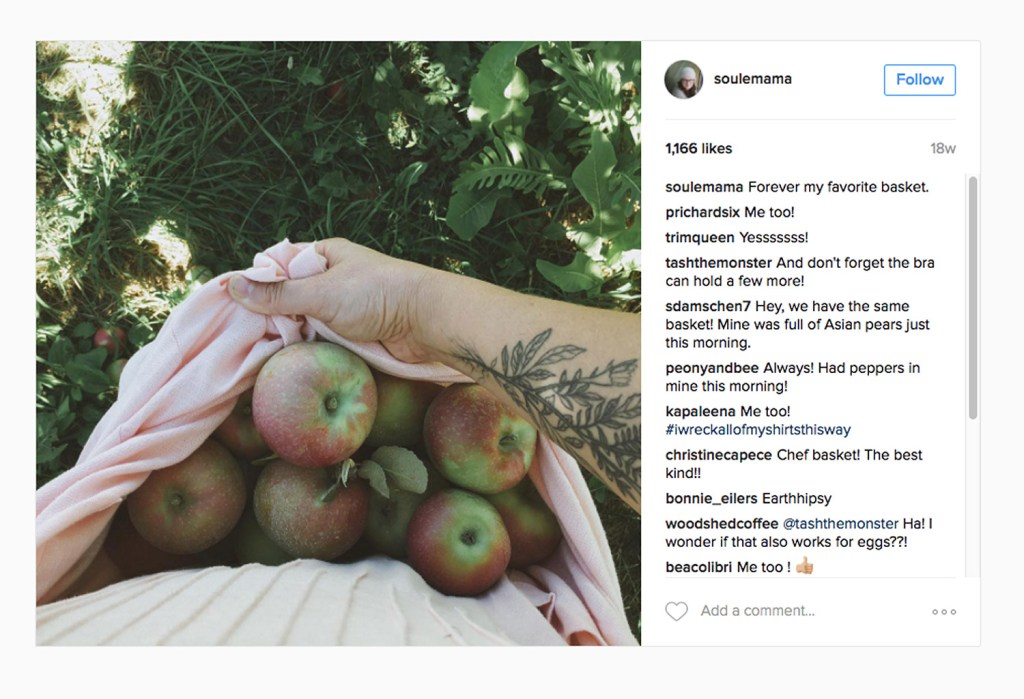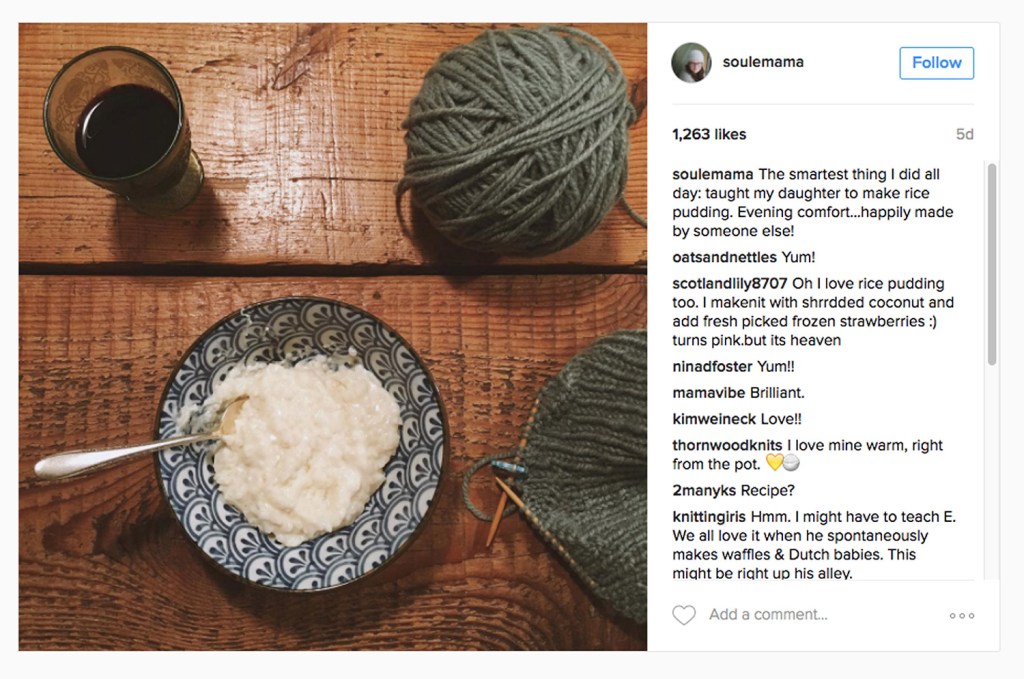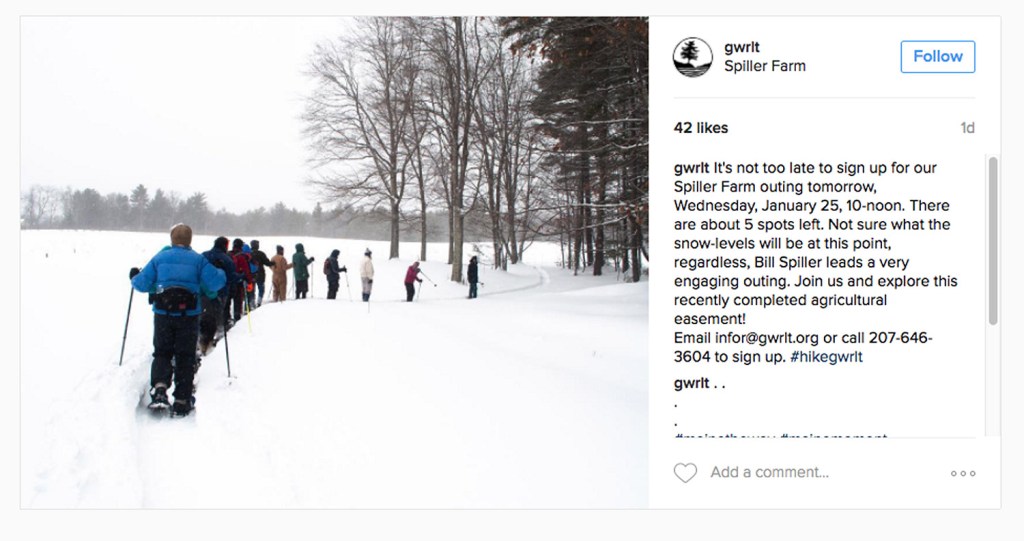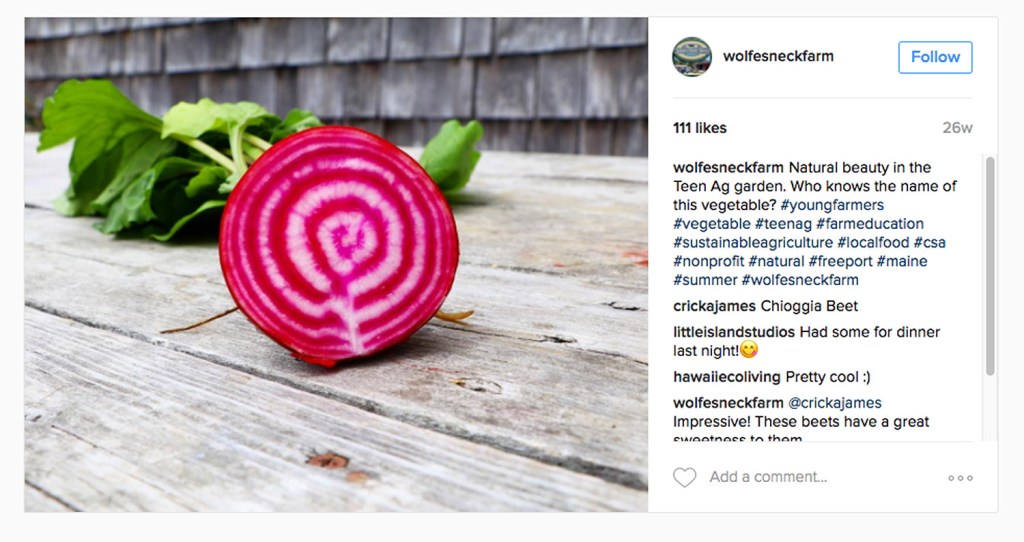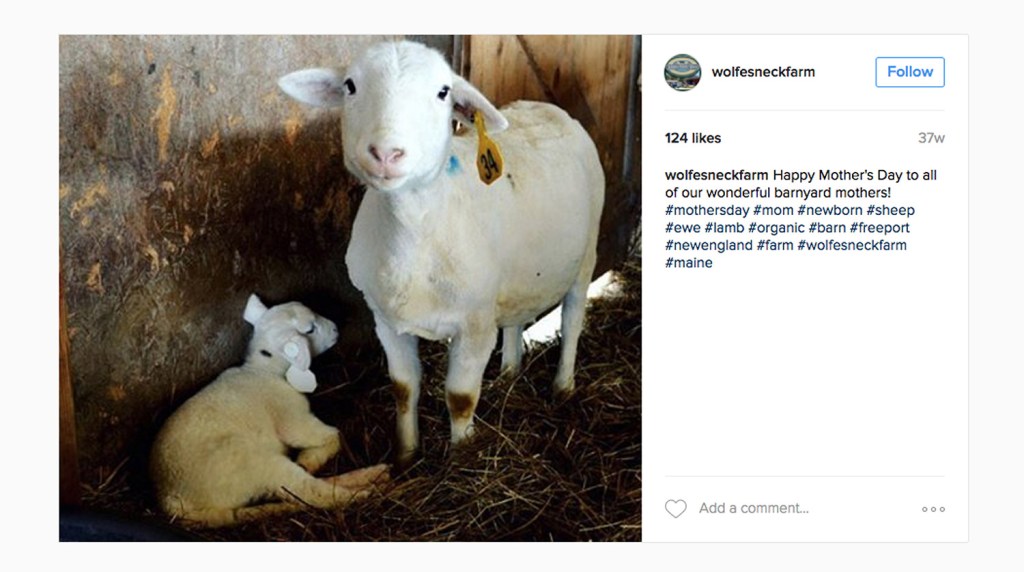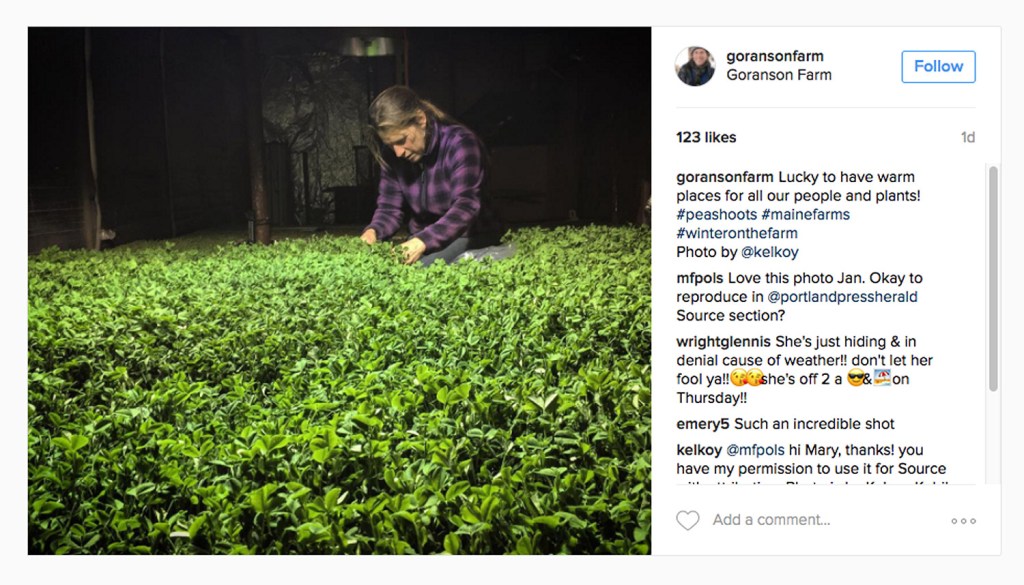Kirsten Lie-Nielsen has nearly 9,000 people in her pocket as she roams her farm in Liberty, many of whom she knows are blatantly there for the goats. They think her puppy Stanley is adorable. Her geese amuse them. Her chickens entertain them. But the goats send them into a frenzy of sharing and liking and commenting along the lines of “awwwww” and “I can’t even!” An Instagram video of her goats skeptically greeting a December snowfall was viewed over 38,000 times.
The farmer/writer is a careful and astute user of Instagram. She posts strategically, once a day and in the evening, when people tend to be looking for a visual treat. In just a few years, she’s built a following not just for her photographs but for the homesteading lifestyle she’s building on Hostile Valley Farm.
Most farmers today, like most businesses today, have a Facebook page and use social media regularly. It’s a way to let people know what they’ll have at the farmers market or when their farm store will be open. But ask your average millennial and they’ll tell you Facebook is for the older generations. And it is cluttered with commerce. Instagram is more about pleasure. That’s why Lie-Nielsen joined initially, but she has also found it a useful tool to build a brand and to reach people with similar interests away from the noise of Facebook or Twitter.
If Facebook is a signpost or brochure, Instagram represents a private (seeming) photo album made public. It’s less about message and more about life behind the scenes. Albeit a highly curated life, which is filtered (literally) through the app. Instagram’s founders might not have been thinking specifically about farmers when they created the app for iPhones in 2010 (it’s since been gobbled up by Facebook), but it’s become a favored, low-key way of spreading the word about a farm.
“There is practically nothing on a menu these days that doesn’t come with a farm name attached to it,” said Rich Brooks, a digital marketing expert who runs Take Flyte, a Maine-based website and social media company. A farmer posting pretty pictures of her or his cows or fields or goats on Instagram is creating a link that goes beyond names on a menu and back to place. “That definitely adds to the value, so that if you go to a farmers market or the grocery, you are more likely to buy that product and more likely to be willing to pay a premium for it.”
That said, looking over a selection of Maine farms’ Instagram accounts, Flyte saw potential to do more (see sidebar). “I didn’t see a lot of quote unquote hard selling. It was primarily branding, and the biggest call to action was ‘Hey, we’re heading down to farmers market.’ That was about as pitchy as I saw them get.”
The change in Facebook algorithms that make it harder for a business – even one you’ve “liked” – to make it into a Facebook feed mean it’s important for users with marketing goals to look for opportunities elsewhere.
“So if I am a farmer and I don’t have much of a budget to spend on these things, Instagram makes a lot of sense,” Brooks said.
THE SOFT SELL
The lack of an obvious pitchy-ness is intentional for Abby Sadauckas of Apple Creek Farm. She’s not going for the hard sell and neither is her partner, Jake. Both have Instagram accounts for their Bowdoinham farm. Both love photography (they met while getting master’s degrees at Vermont College of Fine Arts). They have Facebook too, but “I feel like there is less obligation for the farmer with Instagram,” Sadauckas said. “And we are obviously capitalizing on the thought that a picture is worth a thousand words.”
Jenni Tilton-Flood, who posts on Instagram for Flood Brothers, Maine’s biggest dairy, is an adroit user of Facebook and Twitter but calls Instagram an indulgence in comparison. “It’s kind of like a relief. I can let what I am looking at speak for me.”
Leigh Hallett, executive director of the Maine Federation of Farmers’ Markets, sees widespread usage of Instagram in the small to mid-sized farm range, but says it is by no means limited to the “young and hip” farmers. Maine farmers are using it well, she says. She also confirms, “Goats are gold,” on the app.
For these Instafarmers, Facebook tends to be more for business and educating customers, while Instagram is great for connecting with people who might be more inclined to, say, buy Apple Creek Meats or eggs or sheepskins because of Sadauckas’ winning photos of her awesomely handsome goat Spike.
Instagram is also handy for connecting with other farmers all around the country. “If we post a picture of our chicken house, we always get questions about it,” Sadauckas said. “On Instagram we can share stuff that may be more interesting to farmers. We can be a little bit looser. We can make more manure jokes, perhaps.”
Stacy Brenner of Broadturn Farm said she joined Instagram about four years ago, at the behest of her then 16-year-old daughter. She’s got nearly 8,000 followers, many from well beyond Maine. “It gives us national exposure, but that doesn’t let us sell products for more money or necessarily bring us more local business,” Brenner said. However, a big part of Broadturn’s business is growing flowers and selling her floral arranging services for weddings and parties. That is a business that travels (she just got back from doing a friend’s wedding in Palm Springs and in February will be heading to Vermont to do a wedding). She says she hasn’t been particularly sophisticated about using hashtags – which Brooks recommends as a way to broaden the reach of any Instagram account – but she posts regularly and Instagram essentially replaced blogging in her life. The phone is with her “24/7,” she said.
“Do I see everything in a square?” she laughed. “No.”
Her number of followers has steadily increased. Fostering kittens over the summer helped. “People really love babies. You could put a baby anything up there and they are going to love it.”
THE STORIES WE TELL
“My feed this past weekend was full of pink hats, cute farm animals and an amazing number of pictures from the Women’s March,” said Amanda Blake Soule, who farms in Western Maine. She was pointing out the truth about Instagram – that it is a place of curated happy lives. Very few users seem to have an interest in curating a sad life. Or venturing into territory that don’t look appealing.
“That is the bubble of like-minded people,” Soule said. “It is a completely joyful place because that is who I choose to see. This is a place I keep a little bit protected from the real world.”
Soule started “fairly early in Instagram-land” as a way to broaden her blog platform. She has an astounding number of followers, over 33,000. That’s because she, like Lie-Nielsen, is mostly a homesteader, someone who lives on a farm but isn’t trying to run a commercial operation. (Lie-Nielsen hopes her audience will translate to sales when her first book, a guide to homesteading, comes out this fall.) Soule writes a popular blog called SouleMama and is the editor in chief of Taproot Magazine. Her photos on Instagram speak more to a buocolic farm life than a writer or editor’s life. (Soule has five children, and they wear handmade sweaters like nobody’s business).
“It’s a story I’m selling, I guess,” she said. It’s aspirational. But what makes a farmer’s Instagram feed so appealing is its invitation to access something beyond just bunches of beautiful carrots. It’s chores, it’s being up before sunrise, it’s fixing equipment and caring for lifestock. You feel the farmer’s hours.
“You are seeing their whole value set,” Soule said.
And their life in seasons. You might not think so much about what your favorite farmers from July’s markets are doing in January, but a quick peek at their Instagram might reveal that they, too, are inside with a cup of tea, only they’re going through seed catalogs and planning the spring planting.
EXPOSURE IN YOUR POCKET
“Currently, I don’t have Facebook,” Brenner said. Election season and its aftermath made it a miserable place to be. “I just can’t personally get sucked down into that place.”
Brenner recommends Instagram to other farmers, who she reasons are probably always carrying the basic equipment – a smartphone – with them anyway.
“It is worth having a little bit of exposure in your pocket, and the more agriculture that people see, either visually on social media or out in the world, the better. I think people are going to Instagram to be inspired by beauty, and the romanticism of farming fits with that. The big-picture goal here is to see local agriculture be a rising tide.”
Far from every farmer in Maine is on Instagram. (Maine Farm Bureau has an account but has never posted, although executive director Alicyn Smart said she’s in the process of hiring someone who will likely step up that component of the group’s social media presence.) Connectivity is also a problem in some rural areas. The Maine Department of Agriculture, Conservation and Forestry does encourage use of social media, but they don’t track it, so no one is checking the demographics of Instafarmers.
But those who participate think of it as a place to share the beauty and joys of farming. And sometimes, that feeds a farmer’s soul too, reminding her or him of what they have.
As Jenni Tilton-Flood puts it, she may walk by a newborn calf taking its first steps on a very regular basis. But sharing that on Instagram sharpens her own sense of how special agriculture is. “The everyday ordinary for me may be the extraordinary for someone else. We’re putting a face to it in sharing our ordinary. People don’t necessarily want to know where their food comes from so much as they want to know from whom. They want to know who did this for me. So I make sure that who I am is right there. Just like anybody else putting up pictures of their kid making the honor roll.”
Mary Pols can be contacted at 791-6456 or at:
Twitter: MaryPols
Send questions/comments to the editors.



